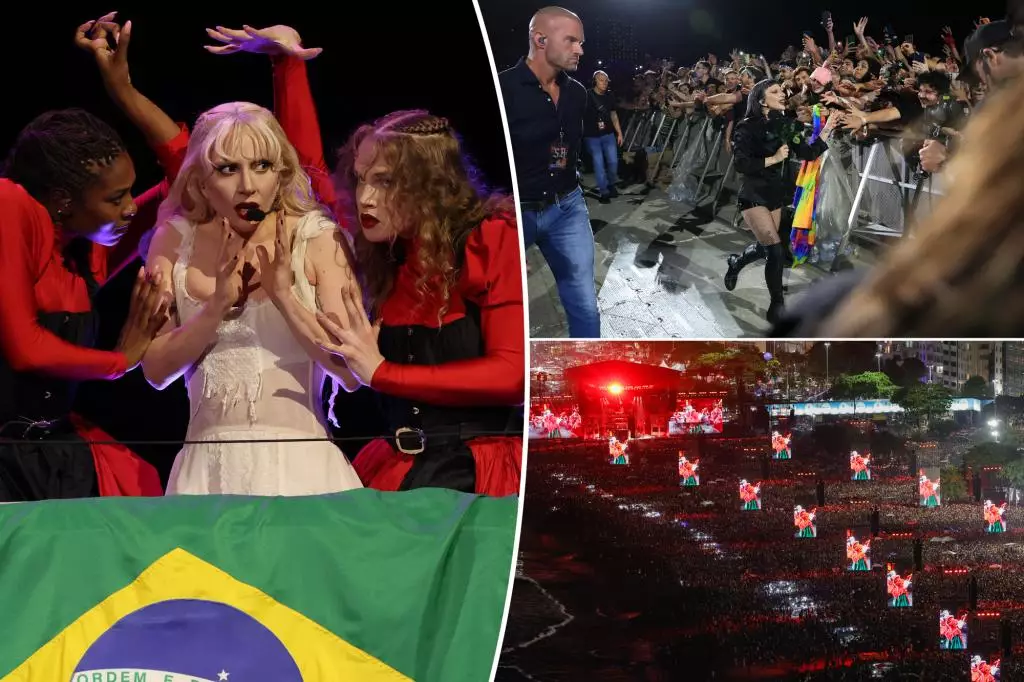In a startling revelation, Lady Gaga’s recent concert in Rio de Janeiro, held on the iconic Copacabana Beach, encountered a significant security threat. Local authorities uncovered a plot by a hate group, whose members masqueraded as her fervent fans—her “Little Monsters.” This alarming development not only raises questions about the safety at public events but also underscores the pervasive issue of radicalization targeting young individuals. The Brazillian police reported that these individuals aimed to recruit minors for violent acts, including bomb attacks using improvised explosives and Molotov cocktails, disguised under the facade of fandom.
The juxtaposition of a vibrant concert atmosphere with such a sinister plot is unsettling. It exemplifies how even celebratory events can become breeding grounds for violence when emboldened by extremism. The police’s quick action, triggered by a tip-off, may have prevented a tragedy, but it exposes deeper societal flaws where youth can be seduced into harmful ideologies under the guise of community belonging.
The Aftermath and Public Reaction
Despite the gravity of the situation, Gaga’s representatives maintained that they were blindsided by this threat, receiving no prior warning from law enforcement. This lack of communication raises critical concerns regarding the preparedness of event organizers and authorities concerning fan safety, especially in an age where social media and public gatherings can intertwine dangerously with extremist behavior. The fact that both the performer and her team learned of the threat only after reports emerged speaks volumes about the need for improved protocols between artists and security agencies.
On a brighter note, the concert itself emerged as a monumental success, attracting an estimated 2.5 million attendees, marking the largest crowd ever for a female performer. Gaga’s response to the threat was characterized by her signature positivity, focusing instead on her experience with the audience, declaring the concert an unforgettable moment. Her ability to channel the energy of the crowd amid an overshadowing security alert illustrates her resilience and commitment to her fans.
Wider Implications for Concert Security
This incident raises critical questions about the evolving nature of security at large-scale music events. With acts of violence becoming increasingly common in public venues, it’s essential for security measures to adapt swiftly. The blending of entertainment with extremist motives reveals a worrying trend of how ideology can hijack pure enjoyment for nefarious purposes.
As we dissect the implications of this event, we can see the urgent need for more stringent security protocols, including thorough background checks and better intelligence-gathering methods to identify potential threats before they materialize. Artists and their teams must be adequately informed and equipped to deal with such challenges, ensuring the safety of both performers and attendees in the future.
Lady Gaga’s recent experience serves as a cautionary tale, reminding us that while music can unify and uplift, it can also be a target for those with darker agendas. Moving forward, the music industry must prioritize safety without dampening the electric atmosphere that live events promise to deliver.

